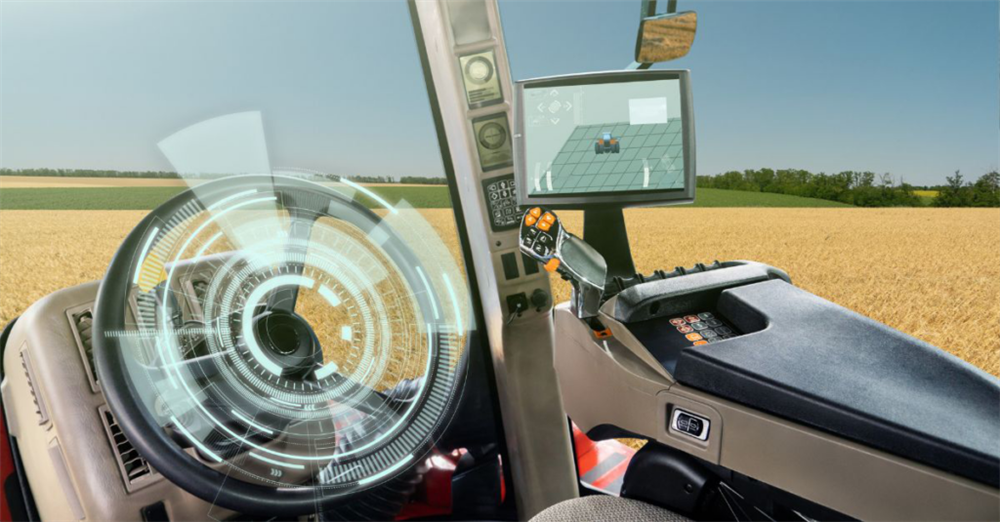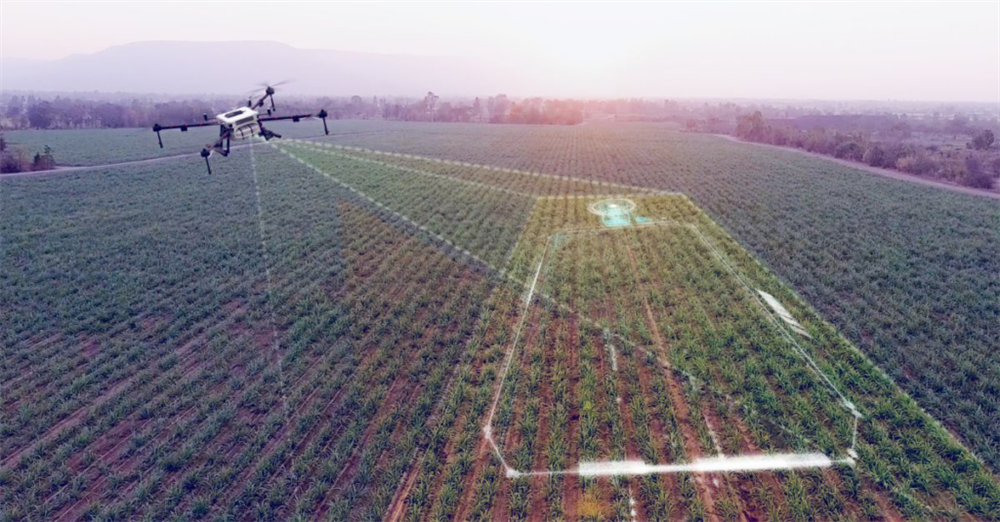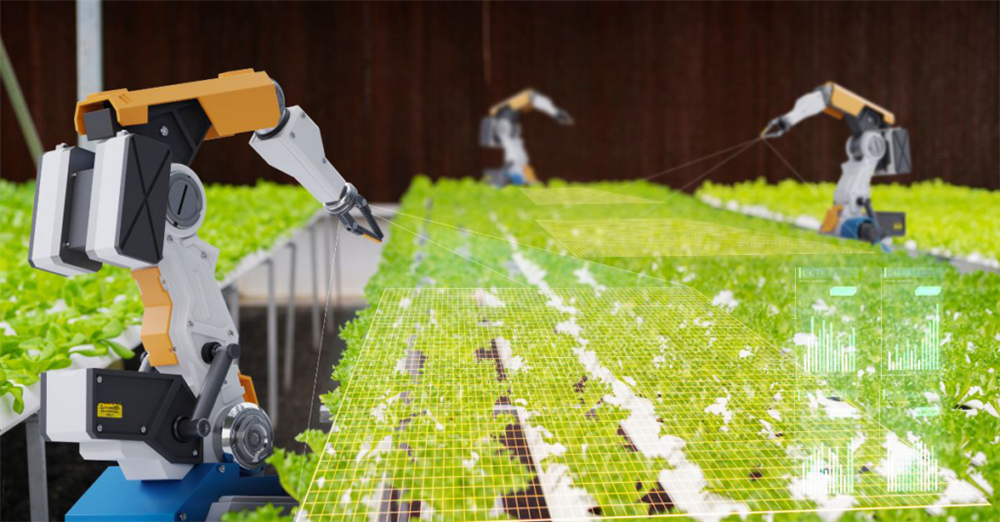Artificial Intelligence: Will Adoption of AI Improve Canadian Food and Agriculture?
Wednesday, July 31, 2024
Reference: BioEnterprise
 Darrell Petras, CEO of Canadian Agri-Food Automation and Intelligence Network (CAAIN) and Rob Hannam, CEO of biosecurity software company Farm Health Guardian, discuss benefits, risks, and current level of adoption of AI in Canadian food and agriculture sectors
Darrell Petras, CEO of Canadian Agri-Food Automation and Intelligence Network (CAAIN) and Rob Hannam, CEO of biosecurity software company Farm Health Guardian, discuss benefits, risks, and current level of adoption of AI in Canadian food and agriculture sectorsBy Tabitha Caswell for Bioenterprise
Artificial intelligence (AI) is driving significant improvements within the food and agriculture sectors in Canada. The implementation of AI can optimize the use of resources and lead to efficiencies across various farming and processing operations.
However, the adoption or uptake of AI solutions in this space is sometimes delayed. As in other sectors, making the leap from analog to digital presents some challenges.
In this Inside Bioenterprise article, we explore the most promising AI technologies, both current and emerging, in Canadian agriculture. We’ll weigh the benefits and risks, highlight some success stories, and then broaden the conversation to discuss policy and regulatory considerations.
Darrell Petras, Professional Agrologist (P.Ag.) and Chief Executive Officer of the Canadian Agri-Food Automation and Intelligence Network (CAAIN), joins in the conversation. With expertise in business development and management, he works closely with startups entering the agri-tech ecosystem. Coming from farming roots, he brings a unique understanding of this topic.
Also contributing to the discussion is Rob Hannam, Chief Executive Officer of Farm Health Guardian (FHG), a digital biosecurity software solutions company specializing in disease prevention and outbreak preparedness for livestock and poultry farms. Rob offers an inside perspective via his experience with data and monitoring systems.
Promising Tech in Canadian Ag
In Canada’s efforts to reach net zero and address climate change and food insecurity, the promise of AI is attractive.
AI technologies have already proven their worth in different farming domains. Automation, like that originally used in the DOT autonomous farm equipment platform, is rapidly evolving. Canadian engineer, Norbert Beaujot, designed the technology that has since been acquired by Raven Industries and integrated into its driverless equipment platform.
Precision agriculture companies like Croptimistic Technology Inc. use AI to identify when crops need management intervention, such as irrigation or pest control. This technology allows for faster response times to crop stress, preserving and potentially improving yields.
Darrell predicts drones will play a larger role soon, especially in pesticide application. They can operate with impressive precision, spraying only where needed, and they can work at night when conditions are optimal, reducing negative impacts on beneficial insects.
He says, “I see exciting things coming soon in this space. Because these drones will be able to fly in patterns, targeting only where applications are needed, we’ll save on spraying, save on labour, and save on energy consumption – essentially, that carbon footprint will be reduced. Of course, while the technology is available, drone-based pesticide application will be possible only when the Government of Canada completes its approval process.”
Darrell shines a spotlight on the significant advancements evolving on dairy farms. He says, “Robotic automation provides more consistent and frequent milking. This mimics a more natural behaviour for cows which encourages continuous milk production.”
These examples of innovation are exciting, and we’re only at the beginning of the transition.

A Bounty of Benefits
The potential for AI-based solutions in food and agriculture is immeasurable and unrealized. As theory eventually gives way to reality, we’ll begin to see our imagination come to life. Until then, let’s review some of the ways AI is impacting Canadian agri-food:
- Crop monitoring and yield prediction allow farmers to make informed decisions about planting, fertilizing, and harvesting.
- Harvesting robots can identify ripe from underripe produce and pick it efficiently.
- Pest and disease detection systems allow for timely intervention, reducing crop losses and minimizing the use of chemicals.
- Smart systems optimize the use of energy, water, and other resources, which contributes to conservation efforts.
- Traceability and safety technologies developed by companies like Grain Discovery and Farm Health Guardian are making a critical impact.
- Soil health analysis provides farmers with information to adjust their fertilizer strategies, reducing the environmental impact of over-fertilization.
- Weed-specific detection systems target undesirable plants hiding in a crop, reducing chemical usage and labour.
Darrell says, “Productivity, profitability, and sustainability: AI is contributing to all three key benchmarks. We’re improving across all inputs as we see AI come online. Misuse of chemicals is reduced. Fertilizers and feed are being optimized. Labour costs are down. And, moving forward, I think we’ll see early detection and warning systems, like that developed by Farm Health Guardian, become more prominent. As we create integration along the value chain, it will significantly improve our food and farming systems.”
But with these benefits come understandable risks. On the Canadian agri-food stage, AI is still in its opening act. There are some questions to be answered and some challenges that must be addressed before farmers and producers will take the leap and go “all in.”

A Balancing Act
Change can be uncomfortable, and it can also be risky. If correct precautions aren’t taken and if things don’t work out as planned, farmers have a lot to lose; but producers won’t be the only ones to experience loss. If our food systems are disrupted by tech failures, we will all pay the price.
The lack of cybersecurity in Canadian agriculture is a current topic of concern. As the Internet of Things (IoT) grows, systems are more at risk. Increasing the number of robots and other automated devices in a network proportionally increases the odds of a cyberattack.
Darrell says, “Once a user is connected to the internet, there is always a risk of running up against sophisticated cyber criminals with nefarious intentions.” He explains that, in the case of robot dairies, for example, cybersecurity is not always robust enough. We’ve seen robotic dairy operations held ransom, which can push farmers into a corner with payment as their only option for timely escape.
Some new technologies present connectivity challenges. With remote sensors for example, if livestock are out grazing too far from the farm base, that remote connection may fall out of range.
Interoperability is another obstacle for farmers when it comes to adoption of new high-tech equipment. For seamless operation, these pieces of equipment need to communicate with each other and if they don’t, production can come to a crawl while the “bugs are worked out.” Darrell says this point leads to another conversation around something called right-to-repair.
“There’s a real challenge inherent in adopting a technology so sophisticated that the farmer cannot handle a maintenance issue without dealership assistance. And I would argue that these challenges occur not only on a practical level but on a cultural level as well. If farmers need to call the dealer and wait for service with every irregular beep and blink on a piece of equipment, things become a little tricky.”
Next, we need to consider simple, solid proof. Farmers are looking for confirmation of function with new technologies. What does this mean? “It’s one thing for a new system to work smoothly under ideal conditions, but how will it perform in the real world where conditions are often less than optimal?” Darrell asks. “Before a producer is willing to introduce something new, they will likely expect reliable evidence of functionality and on-farm validation.”
Rob Hannam with Farm Health Guardian, says, “On-farm validation is really about building trust with the customer that a new AI-driven technology will work in their particular situation. Every farm business or food company is different, so when something is new, people want to see it for themselves. But, as the technology is proven with more and more customers, the need and desire for validation on every farm, or with every food company, will be reduced.”
Once we have confirmation of function, we move to another important point when it comes to risk for farmers: return on investment (ROI). The idea of AI and automation seems “cool,” but if it doesn’t improve the bottom line, interest in adopting these technologies will be lukewarm at best.
And depending on where a farm business or food company is in its technology journey, the time to see an ROI will vary. Rob says, “If they are already using a lot of technology and have an easy-to-access dataset about their business, they will likely see an ROI more quickly. If the business is earlier in its technology adoption journey, then an ROI will likely take longer to achieve.”

Current Level of Adoption
Considering all these risks, you might be wondering what the current level of AI adoption is within the Canadian agriculture and food sectors, which begs the question: just how many producers are using AI right now? Not so fast. Because things are evolving so quickly, this number is difficult to measure or quantify.
Darrell suggests that instead, perhaps, we can think of it creatively, speculating about particular sectors within ag, based on logical reasoning. For example, he says, “Most farm acreage in Canada is managed by large, or broad-acre, farms. Most of those large operations use global positioning system-guided, tractors. So, we might say that on large farms, and therefore on most acres, we could have an adoption rate as high as 80 to 90 percent.”
Soon to follow in these footsteps, robot dairies are gaining momentum due to their proven benefits, or confirmation of function and ROI. Controlled environment facilities like greenhouses are adopting AI systems as well.
Darrell points out that there might be a growing number of small farms in Canada putting AI to work, but because the size of acreage is low overall, proportionally that rate of adoption will remain small as well until the large, broad-acre farms embrace it. “Most technologies start small and then grow as production is scaled up,” he says.
For Canadian producers to scale up and fully realize the potential of AI, we must solve the problems and overcome the barriers that are causing risk. To achieve this, the agri-food and agri-tech communities need support.
Read More
Sign up to stay connected
- News
- Property Alerts
- Save your favourite properties
- And more!
Joining Farm Marketer is free, easy and you can opt out at any time.
